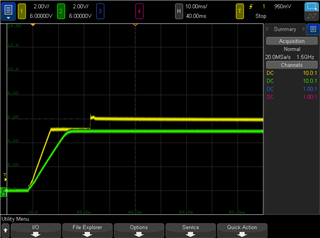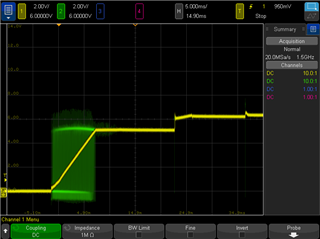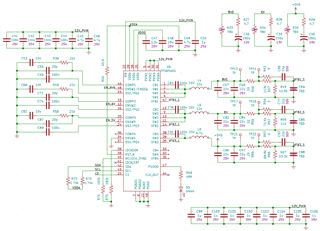I have a design in which I use the first three outputs of this chip, and output 1 will randomly work or not work. Each time the chip is powered up, or the output is switched on through ENSW1, there's a random chance that it will work correctly. When it is not working, the comp node will be at 0.476V instead of 0.8V, and the output will be about 5V. This output will be maintained even if I turn the other channels off through their ENSW pins. The switch node is a constant DC value. This output seems to have an impedance of about 3 ohms based on a load test with a small resistive load. The chip will quickly warm up even with a small load because it is essentially acting as a linear regulator. There's a second one of these chips on the board with the exact same layout, but different feedback resistors and I2C resistor. That chip works perfectly. I have checked the passives for the first chip extensively and there's nothing wrong with them. I have also replaced the chip twice with brand new parts, and the problem repeats itself in the exact same fashion.
The following is a startup transient of the bad chip. Yellow is the output 1 voltage (set for 8.5V), green is the output 3 voltage (set for 5V). Both start correctly, but output 1 abruptly stops rising at 5V. The voltage increases again when the regulator appears to retry the startup, and this will fall back down to 5V over the course of a few seconds.

Here's another view, with green now showing the switch node. The switch stops once 5V is hit. Two singular pulses to 0V can be seen after the initial climb, and the output voltage bumps higher when this occurs.

I was not successful in capturing a working startup transient.



